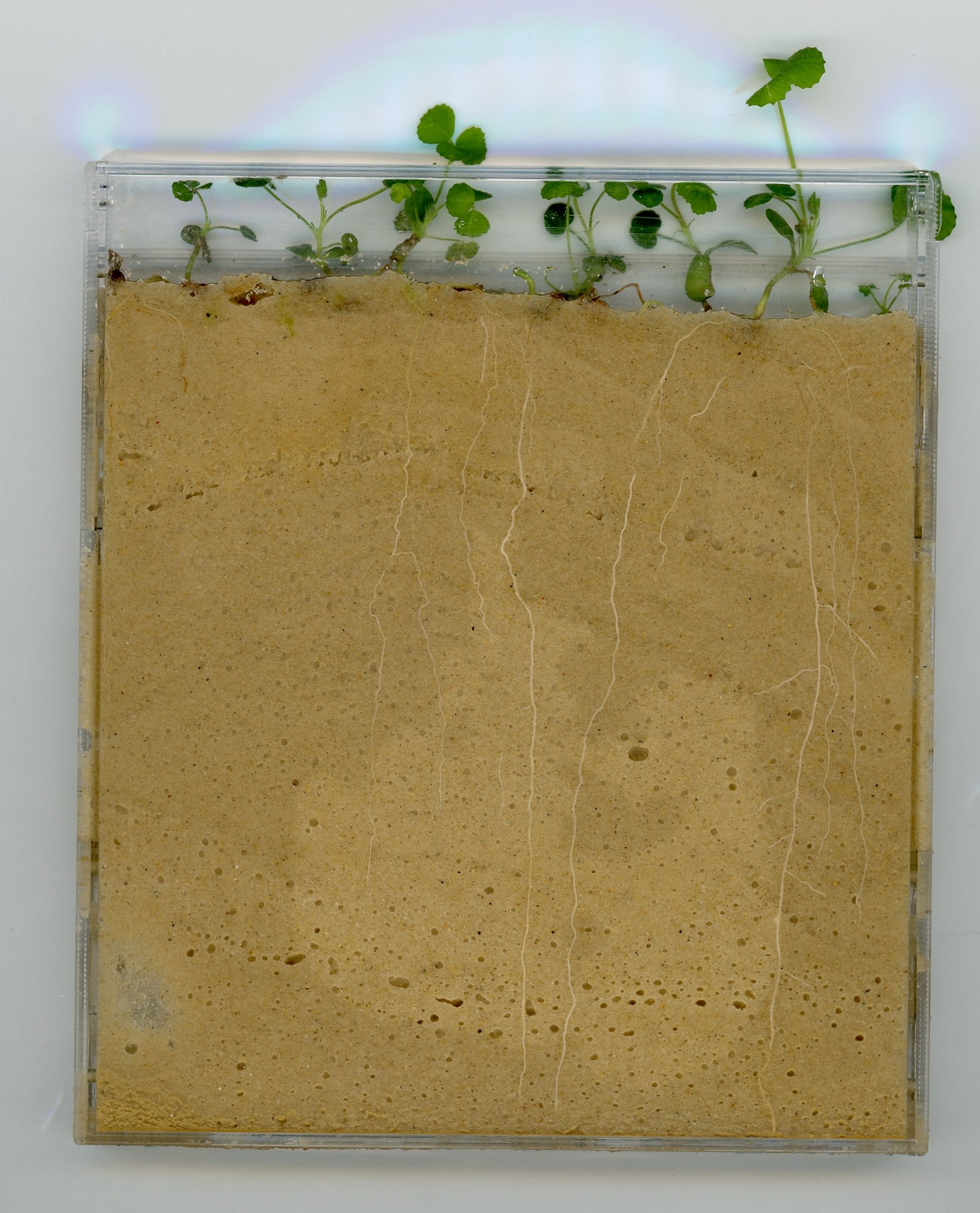One person's techno trash is a scientist's research tool
It's hard to study plant roots, but a plastic CD case makes it easier to observe a plant's underground activities
Plant roots are complex and delicate structures that provide the aboveground stem and leaves with nutrients and water. Studying them can tell us a lot about a plant's survival strategy and its associations with soil fungi and bacteria. There's a lot going on beneath our feet that we just can't see.
And that's part of the problem: roots are very difficult to study because they are hidden below layers of soil. To measure and observe roots, plant biologists must either dig up the plant, an approach aptly referred to as "destructive sampling," or install a see-through chamber called a rhizotron. A rhizotron is kind of like an ant farm: it allows you to observe what is going on in the soil though a clear panel. But rhizotrons can be expensive and, depending on a scientist's research goals, not worth the effort it takes to construct them.

CD case rhizotron
Steven Cassidy
Now, a group of biologists from the University of Pittsburgh have developed an inexpensive and simple mini-rhizotron from a now-defunct household object: a plastic CD case. Their method was published in April in Applications in Plant Sciences. The case itself is filled with soil, and the growing plants protrude from the hinge. Because plants can sense and grow in the direction of gravity, storing the CD cases at an angle forces the roots to grow up against the see-through sides of the cases, making them easy to see and measure without disturbing the plant.
This method only works for studying small plants — there is no CD case large enough to grow a tropical tree! But it's a clever method that fills a scientific need, and one that the authors hope will make root research accessible to teachers, ecologists, agricultural scientists, and other researchers no matter what financial resources they have available.





















